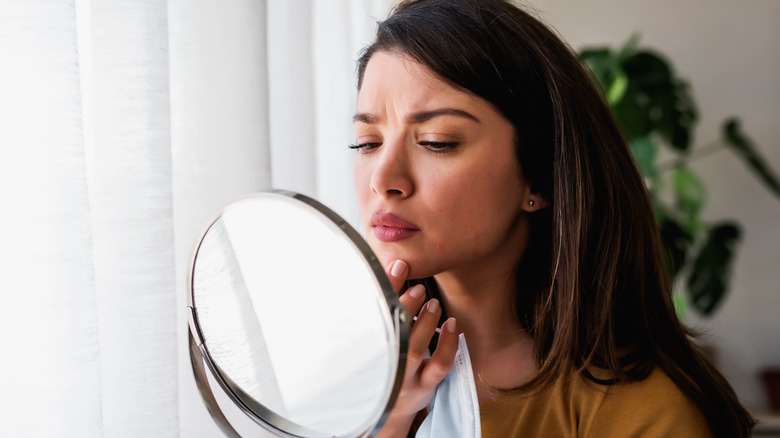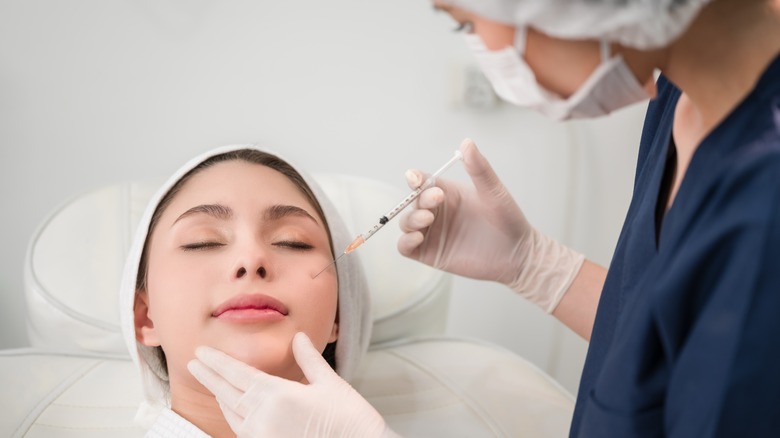'Ozempic Face' Is Dermatologists' Latest Concern
Ozempic is a medication designed to lower the blood sugar levels and the risk of cardiovascular events in people with type 2 diabetes. Semaglutide, the active ingredient in Ozempic, also induces weight loss. Ozempic's website clearly states the medication is not a weight-loss drug, although it also highlights that patients lose an average of 14 pounds. The site even compares its ability to reduce body weight with other type 2 diabetes medications, and it is now being seen by many as a cheat code for losing weight without dieting.
Celebrity testimonials have also boosted the popularity of taking Ozempic as a weight-loss drug. Elon Musk tweeted that his secret to shedding 30 pounds was "Fasting + Ozempic/Wegovy + no tasty food near me." However, using Ozempic to lose weight doesn't come without consequences, as many users are winding up with the so-called "Ozempic face". So what is this side effect, and how can you avoid it?
The major side effect of using Ozempic for weight loss
If you're using Ozempic or a similar medication for weight loss, you can experience "Ozempic face," also called "semaglutide face." Dr. Sara Jo Walton, a licensed naturopathic medical doctor, took to TikTok to explain what this side effect is. She explained that it is caused by losing too much fat in the face, which results in wrinkles. These outcomes can cause patients to appear hollow and lifeless. Dr. Walton, who specializes in medical weight loss, observes that "it seems to only happen when people are dosed too high too quickly."
The appearance of rapid aging is often the tradeoff with drastic weight loss. It can happen with weight loss surgery or after dropping pounds through diet and exercise. Dr. Kotlus, an oculofacial plastic surgeon, describes sunken under eyes, cheeks, and lines around the nose, mouth, and neck wrinkles as typical effects of weight loss. So how do you get rid of your "Ozempic face"?
What is the fix for 'Ozempic face'?
Luckily, this bizarre side effect is not necessarily permanent. Dermatologist Marisa Garshick, M.D. tells Weight Watchers that there are ways to combat sagging and hollow skin. She says, "It can help to perform procedures that resurface and boost collagen, such as fractional laser resurfacing as well as injectables such as Botox, which help to reduce muscle movement to prevent wrinkle formation." Ever-popular hyaluronic acid fillers are another way to plump skin and diminish wrinkles.
However, prevention is always better than treatment. Dr. Rocio Salas-Whalen, a board-certified endocrinologist, says that the best way to avoid "Ozempic face" is to lose weight at a moderate pace. Shedding more than 2 pounds a week can lead to muscle and water loss, not just fat. This is what causes the aged, lifeless look. For those already experiencing sagging skin, she recommends increasing your protein intake and building muscles, which will fill loose skin. When using medication for weight loss, consult your doctor to create the best plan for avoiding or treating "Ozempic face."

